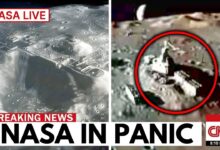Why Russia’s New Axis is Way Dumber Than You Think

The ongoing conflict in Ukraine has led to increased support for Russia from countries like Iran, North Korea, and China. Since the invasion, Iran has supplied over 3,700 kamikaze drones and shared manufacturing techniques with Russia. They plan to establish a factory in Russia to boost drone production. Additionally, the EU reported that Iran provided 400 short-range ballistic missiles to Russia.
North Korea has also contributed significantly, sending 11,000 containers of arms, including 5 million rounds of artillery. China plays a vital role by purchasing Russian oil and gas and supplying dual-use products like semiconductors, which are essential for Russia’s military operations. The American Enterprise Institute estimates that 90% of Russia’s imported semiconductors come from China.
The U.S. has supported Ukraine with over $175 billion in aid, framing the conflict as a proxy war between America and China. Cooperation among Russia, China, Iran, and North Korea is extending beyond military support. They have signed agreements promoting a multipolar world order and engaged in joint military exercises.
This collaboration stems from their shared goal of undermining U.S. influence. Each nation has revisionist objectives that threaten U.S.-backed states. U.S. sanctions have forced Iran and North Korea to seek partnerships for survival. Iran relies heavily on China for oil sales, while North Korea depends on Chinese imports.
Historically, these nations weren’t closely aligned, but recent geopolitical shifts have united them against the West. Russia’s full-scale invasion of Ukraine and the subsequent sanctions have pushed it to seek alternative partners, leading to deeper ties with Iran and North Korea, which share a common interest in opposing the U.S. and its allies.
The conflict dynamics involving Russia, North Korea, Iran, and China are shifting due to Russia’s growing reliance on military technology from these nations. While Russia is eager to form an alliance, the reality is more complicated. Russia, Iran, and North Korea are isolated from the U.S. and Western allies, whereas China benefits significantly from the current global order, maintaining strong trade ties with the West.
Despite increased trade with Russia since the Ukraine invasion, China’s overall trade with these nations remains minor compared to its dealings with the U.S. and EU. For instance, China’s trade with the U.S. and EU is about six times higher than its trade with Russia, Iran, and North Korea combined. This gives China a significant incentive to maintain its relationship with the West, balancing it with its ties to Russia, Iran, and North Korea.
The relationship between Russia and China is especially important but problematic. China benefits from the war in Ukraine by keeping Russia dependent on it, allowing China to negotiate lower prices for Russian oil and gas. However, this also means Russia is losing its economic independence, becoming increasingly reliant on China for resources.
While Russia has sought to expand its energy exports to China, negotiations have been slow. China is in a position to demand favorable terms, knowing Russia has few alternatives for its resources. As the war in Ukraine continues, Russia may have to concede more to China.
China’s relationship with North Korea is also complex. While supporting North Korea militarily, China is wary of increasing its aggression toward South Korea, fearing instability. Analysts suggest that North Korea may be preparing for conflict with South Korea, which poses risks for China. Overall, the relationships among these countries are fraught with both cooperation and tension, limiting the possibility of a true alliance.
The current dynamics between Iran and Russia regarding oil exports have led to increased competition. Iran exports 90% of its oil to China, while Russia exports 45%. This situation has created a price war that favors Russia, which has more production capacity and is not subject to secondary sanctions like Iran. As a result, Russia has little incentive to collaborate with Iran, leading to Iran’s oil being crowded out in the Chinese market.
Moreover, the two countries are at odds over the South Caucasus region, particularly concerning Azerbaijan’s Zangazur Corridor, which aims to connect Azerbaijan with its exclave through Armenian territory. Iran, which has historical ties with Armenia, opposes this plan, fearing it would block its access to the Caucasus and hinder its connections to Russia and Europe.
Russia’s shifting support from Armenia to Azerbaijan has further strained relations with Iran. Although there are appearances of cooperation, significant tensions remain between the two countries, particularly in their respective theaters of conflict.
Both Iran and Russia, along with North Korea and China, have mutual interests in prolonging conflicts in each other’s regions to distract the United States. This strategy aims to exhaust U.S. military resources and demonstrate that the U.S.-led world order can be challenged. Recent events, such as Iran’s direct attacks on Israel, have heightened tensions and highlighted the complex interdependencies among these nations.
The escalation of violence on October 7, when Hamas launched a significant attack on Israel, had far-reaching implications. It intensified the conflict in Gaza and impacted regional dynamics, blocking potential normalization agreements between Israel and Saudi Arabia. This attack was the most significant against Israel since 1973, leading to a massive Israeli retaliation.
Understanding the events of October 7 requires a deep historical context, as the ongoing violence has resulted in one of the worst humanitarian crises of the 21st century. This critical situation is still unfolding, and further analysis is available through dedicated platforms like Nebula, which offers comprehensive coverage of global conflicts.








